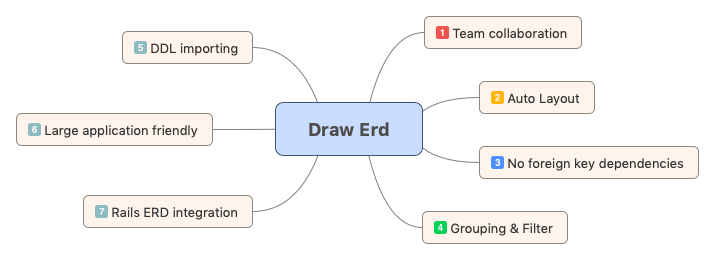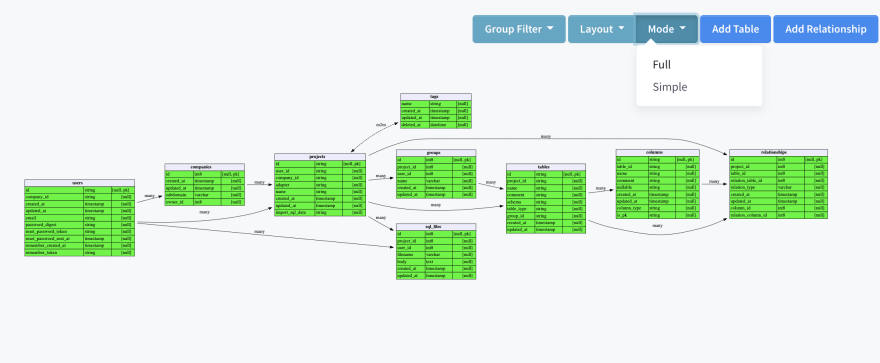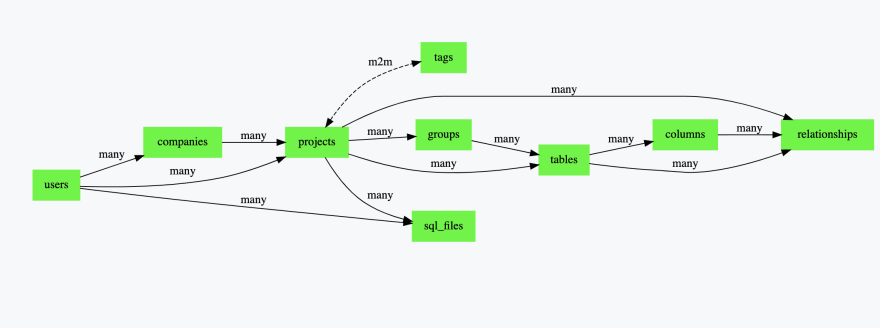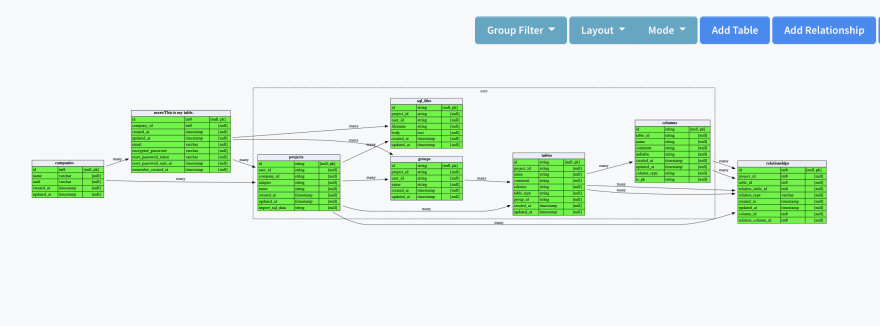Why ERD
The database model is the core of your application, describing data tables, data types, entity relationships and constraints, and is the most important means of communication during the project development phase. A clear ERD can make it easier for the team to understand the needs and grasp the overall picture of the application.
Scenario
Startup projects
For start-up projects or new requirements, being able to correctly establish a data model that meets business needs is a key factor in the project's smooth iteration. With tools like DrawERD, you can quickly transform your requirements into visual ERDs, and reach consensus among team members. There is no need to repeatedly check whether "category and product are one-to-many or many-to-many?" Information that is ignored but particularly critical.
Legacy projects
For legacy projects, the general business has been very stable, but the newcomer has just joined the team, and the business system in the face of hundreds of tables is often unintelligible. With DrawERD, newcomers can quickly understand project data relationships and have a systematic understanding of applications. If your database already has hundreds of tables and you plan to migrate from a monolithic application to a MicroService, then DrawERD's grouping function is the best tool. By simulating the grouping of modules, you can clearly determine which entity is placed in which service More reasonable.
Why not alternative?
The picture above is the core feature of DrawERD. Compared with the popular modeling tools on the market, it does a lot of tradeoff. Let me talk about the reasons for each decision.
- SaaS vs desktop tool:Compared to desktop tools, team collaboration is a goal of DrawERD. You can generate urls and embed them in your project management tools, and changes in ERD will be automatically synchronized.
- Auto layout vs Drawing on canvas manually:Many tools edit ERD based on drag and drop on the canvas. This way looks cool, but when it is actually used, if your application reaches dozens of tables, it is a disaster. DrawERD uses automatic layout, which will automatically render a fresh and beautiful SVG image according to your entities and relationships. At the same time, you can choose a combination of mode and layout for rendering.
- Database agnostic vs Database binding:Some tools need to rely on the database connection to reverse the data structure. DrawERD chooses to use static analysis. You only need to export the CSV file from the information_schema of your existing database to upload. For new projects, you only need to create entities and relationships on the interface. Rely on any foreign key and meta-information of the database. At the same time, for the rails project, DrawERD integrates the Rails ERD gem, you can seamlessly migrate.
Preview
Grouping
- Full video here: https://www.loom.com/share/e30d06ba299b43bc8b68f369b47f745a
- Try DrawERD online: https://drawerd.com






Top comments (0)